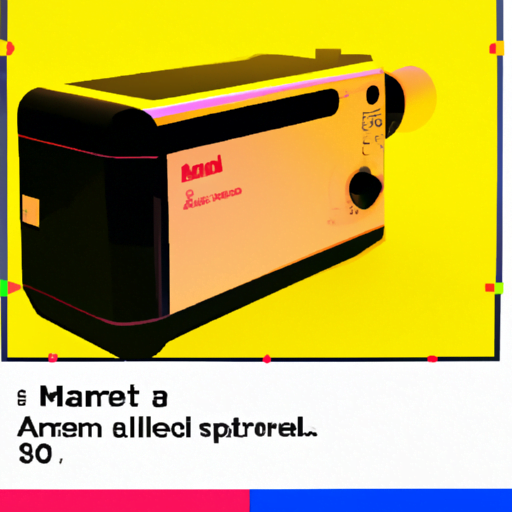-
Table of Contents
- AI-Enhanced Product Design: Streamlining Prototyping
- The Role of AI in Product Design
- 1. Idea Generation and Conceptualization
- 2. Design Optimization
- 3. Rapid Prototyping
- Case Studies: AI-Enhanced Prototyping in Action
- 1. Volkswagen and Siemens
- 2. NASA and Autodesk
- The Benefits of AI-Enhanced Prototyping
- 1. Time and Cost Savings
- 2. Enhanced Creativity and Innovation
- 3. Improved Design Quality
- Conclusion
AI-Enhanced Product Design: Streamlining Prototyping
Product design is a critical phase in the development of any new product. It involves creating prototypes to test and refine ideas before moving forward with production. Traditionally, this process has been time-consuming and costly, requiring extensive manual labor and expertise. However, with the advent of artificial intelligence (AI), product designers now have access to powerful tools that can streamline prototyping and enhance the overall design process. In this article, we will explore how AI is revolutionizing product design and the benefits it brings to the table.
The Role of AI in Product Design
AI has the potential to transform the way product designers approach their work. By leveraging machine learning algorithms and data analysis, AI can assist designers in various aspects of the design process, from ideation to prototyping. Here are some key areas where AI is making a significant impact:
1. Idea Generation and Conceptualization
Coming up with innovative ideas is a crucial step in product design. AI can help designers generate new concepts by analyzing vast amounts of data and identifying patterns and trends. By analyzing market trends, customer preferences, and existing product designs, AI algorithms can suggest novel ideas that align with user needs and market demands. This not only saves time but also increases the likelihood of creating successful products.
For example, the design software platform Autodesk Fusion 360 utilizes AI algorithms to generate design options based on user inputs. By analyzing the desired product specifications and constraints, the software can provide designers with multiple design alternatives, allowing them to explore different possibilities quickly.
2. Design Optimization
Once a concept is selected, designers need to refine and optimize the design to meet specific requirements. AI can assist in this process by analyzing design data and providing insights on how to improve the product’s performance, functionality, and aesthetics.
For instance, Generative Design, a technology developed by Autodesk, uses AI algorithms to optimize designs based on specified criteria. By inputting design goals and constraints, the software can generate multiple design iterations, each with slight variations. These iterations are then evaluated based on performance metrics, such as weight, strength, and manufacturability. The result is an optimized design that meets the desired criteria while pushing the boundaries of what is possible.
3. Rapid Prototyping
Prototyping is a crucial step in product development as it allows designers to test and validate their ideas before investing in full-scale production. AI can significantly speed up the prototyping process by automating certain tasks and providing real-time feedback.
For example, 3D printing is a popular method for creating prototypes. AI algorithms can analyze the design files and optimize the printing process by automatically generating support structures and adjusting printing parameters. This not only saves time but also improves the overall quality of the printed prototype.
Case Studies: AI-Enhanced Prototyping in Action
Let’s take a look at some real-world examples of how AI is being used to streamline prototyping:
1. Volkswagen and Siemens
Volkswagen and Siemens collaborated to develop an AI-powered system that automates the design and prototyping of car parts. The system uses AI algorithms to analyze existing designs, customer requirements, and manufacturing constraints. Based on this analysis, the system generates optimized designs and automatically creates 3D-printable prototypes. This not only reduces the time required for prototyping but also improves the overall quality of the parts.
2. NASA and Autodesk
NASA partnered with Autodesk to explore the use of AI in designing and prototyping spacecraft components. By leveraging AI algorithms, NASA engineers were able to generate optimized designs for rocket engine injectors. The AI system analyzed thousands of design options and identified the most efficient and lightweight design. This resulted in a 75% reduction in the weight of the injector, leading to significant cost savings in fuel and materials.
The Benefits of AI-Enhanced Prototyping
The integration of AI into the product design process offers several benefits:
1. Time and Cost Savings
- AI algorithms can automate repetitive tasks, such as generating design options and optimizing prototypes, saving designers valuable time.
- By streamlining the prototyping process, AI reduces the overall development time, allowing products to reach the market faster.
- AI can identify design flaws and potential issues early on, minimizing the need for costly design iterations and rework.
2. Enhanced Creativity and Innovation
- AI algorithms can analyze vast amounts of data and generate new design concepts, expanding the creative possibilities for designers.
- By providing designers with multiple design alternatives, AI encourages exploration and experimentation, leading to more innovative solutions.
3. Improved Design Quality
- AI algorithms can optimize designs based on specific criteria, resulting in products that perform better, are more functional, and have improved aesthetics.
- By analyzing user feedback and market trends, AI can help designers create products that better meet customer needs and preferences.
Conclusion
AI is revolutionizing the product design process by streamlining prototyping and enhancing overall design quality. By leveraging AI algorithms, designers can generate innovative ideas, optimize designs, and rapidly prototype their concepts. The integration of AI into product design offers significant time and cost savings, enhances creativity and innovation, and improves the overall quality of the final product. As AI continues to advance, we can expect even more exciting developments in the field of AI-enhanced product design.
